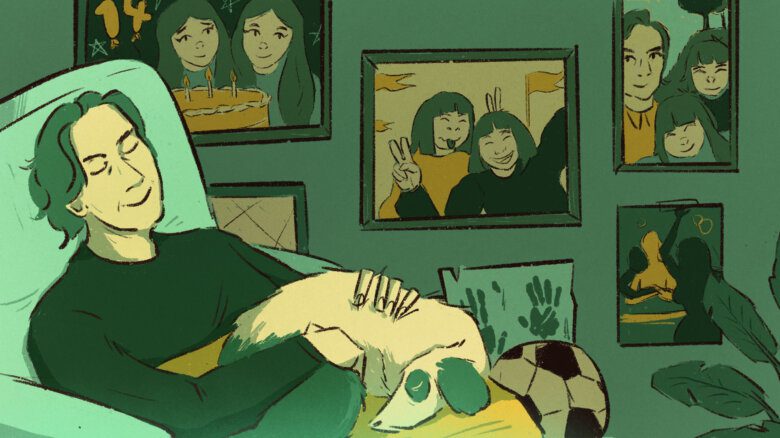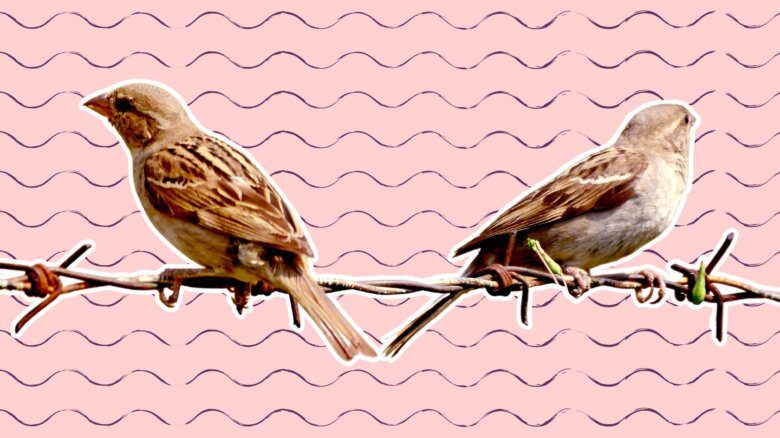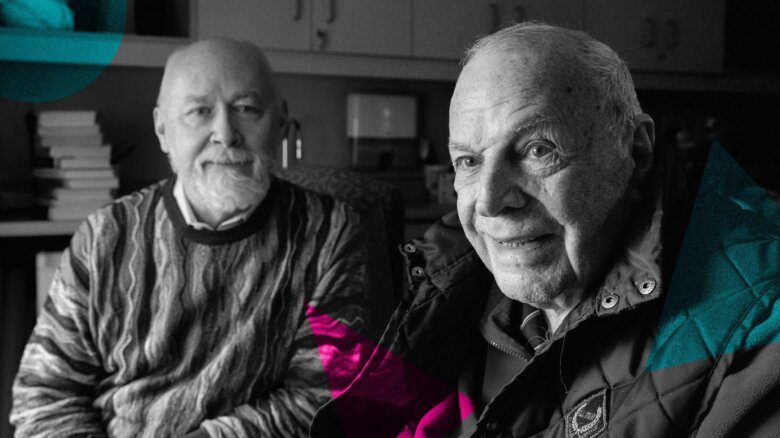Mike MacNabb and his husband Ivan Boychuk’s love story is its own romantic comedy. From their happenstance meet-cute almost 40 years ago at a Toronto gay bar where MacNabb was manager and Boychuk the beyond-tipsy patron in cowboy boots and a big brass-buckled belt to an unexpected phone call during which MacNabb looked outside his window to find Boychuk standing 17 floors down looking back at him, their relationship is what fairytales are made of. But it wasn’t until members of their families started dying over the last few years that the couple began considering what their happily ever after might look like.
They decided, in celebration and recognition of their 35 years (and counting) together, to buy a niche in a columbarium in Mission, British Columbia, where they had once owned a home before eventually retiring in Victoria. “We were really happy about that,” MacNabb tells me during a recent phone call. “We’re going to do our final resting in the place where we made our life.”
When MacNabb set out to find the urns in which their cremated remains would live, he discovered that they could purchase a companion urn—one big enough to hold both of their ashes. “I thought, ‘Wow, that’s it!’ It was one thing to be in the same niche together, but the thought of being in the same urn together was just it.”
MacNabb, 63, eventually found the perfect companion urn, one titled “Together Forever” that featured a couple walking down a path. But when he noticed that there wasn’t an option to get the urn with two men on it instead of a man and a woman, he set out to change that, a move that’s prompting a shift by a funeral industry leader to become more inclusive.
According to the Cremation Association of North America, cremation has slowly become the new funerary tradition, replacing burial services, which are typically more expensive. Across Canada and the United States, the percentage of dead being cremated has steadily increased since 2004, with 54.6 percent of U.S. deaths and 73.1 percent of Canadian deaths resulting in cremation in 2019. While single urns, which are used for the ashes of a single body, are more popular, “we do get quite a few requests for companion urns because a couple wants to be interred together,” says Mike Devaney, merchandising manager at Wilbert Funeral Services, Inc. in Broadview, Illinois. With companion urns, he tells me, the urn is sometimes purchased when both members of a couple are still alive. Upon the death of the first partner, their ashes are placed in the urn. Once the second partner dies, their ashes are used to complete the urn and then interred, kept at another family member’s home or elsewhere.
While most urns have no design beyond the material they’re made of (save for engraved plaques and pendants that can be customized and attached), some urns go a little further. Wilbert Funeral Services’ website features urns with picture frames on the side, for example. Their site also advertises the “Together Forever” design MacNabb and Boychuk, 66, first fell in love with (though from a different site): A box made of solid walnut with a natural finish featuring an intricate, three-dimensional laser carving of a couple walking arm-in-arm in a pastoral setting. The only problem with the design was that the couple was straight, and MacNabb and Boychuk are not.
Unable to find any other design that met their desires—“The only thing that I could find when I did Google searches for LGBTQ urns was a stainless steel tomb with the Pride flag on it,” MacNabb says—McNabb made a round of calls to various funeral companies across Canada and the States to see if the “Together Forever” design came in or could be made with a gay couple. Over and over, he was told “no.” In fact, one company suggested he and Boychuk buy the urn as is and try to paint over the woman carving to make it look like a man, MacNabb recalls.
“I was insulted. I was hurt. I felt so left out,” he continues. Reflecting on how far gay rights had come worldwide, with marriage equality in more states, provinces and countries than ever before, MacNabb couldn’t understand why getting an inclusive urn was so hard. After all, gay people love and die and want to be interred with their partners forever, too.
Still committed to making his desired arrangement happen well before it was actually needed, MacNabb eventually reached out to Wilbert Funeral Services, using an online form on their website to inquire about getting the urn with a gay couple. His message was received by Kelly Kubicz, the company’s administrative assistant. Kubicz tells me that though she knew the answer to MacNabb’s request, she nonetheless contacted her colleagues in the sales department. Upon receiving confirmation that there was no gay version of the urn, she offered other options to MacNabb, which he declined. Sensing his disappointment, Kubicz took the request to Devaney to see if anything could be done.
Though Devaney admits the request was uncommon, particularly because Wilbert works with various licensees throughout North America whose customers are funeral homes as opposed to actual individuals, he called the company’s supplier, Mabrey Products, which is based in Chico, California. When he asked if the urn could be customized, the supplier reached out to its designer, who is actually retired. Days later, the supplier sent a new, inclusive design to Devaney and Kubicz which they promptly sent over to MacNabb and Boychuk.
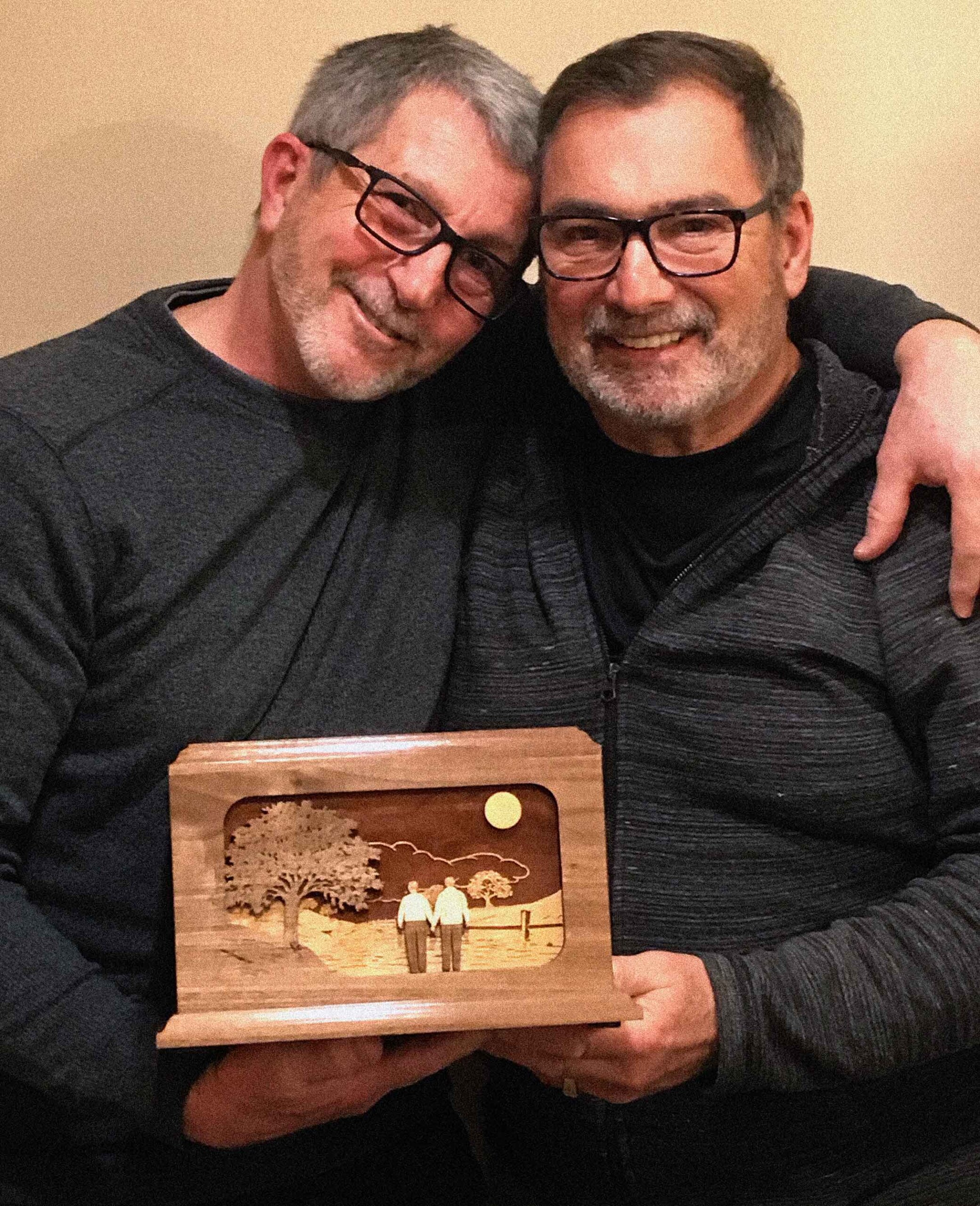
The couple was amazed, and deeply emotional. But they were also grateful, finally able to exhale knowing their search was coming to an end. “I never thought I would get it, and I thought that I would probably have to find a carpenter to give me what I want,” MacNabb says. “The more I thought about it, the more it meant to me. And I don’t like the word ‘no,’ so when somebody says it [to me], I’ll find a way to make them say ‘yes,’ especially when it’s standing up for my rights. Now we’ve got this and we’re beyond thrilled.”
Inspired by MacNabb and Boychuk’s efforts, the urn’s supplier also drew up designs with a lesbian couple. On Apr. 1, Wilbert Funeral Services announced to their entire network that the companion urn would now be made available for purchase with both gay and lesbian couple carvings.
“We realized the need to expand our offering to all couples after an earnest conversation with these gentlemen who explained that not only were they unable to find an appropriate urn, but felt turned away by others they reached out to,” Devaney said in the press release. “They told us that they were grateful to Wilbert for breaking through barriers and making life and love equal, no matter who you are.”
Devaney also noted that the company would be staging research studies and focus groups to ascertain if there are any other relevant needs LGBTQ2S+ communities might have that Wilbert can support.
“What can I say?” MacNabb says when I ask him how he feels about being the catalyst for such a development in the funeral industry. “I feel warm. I feel proud. And now I want to get the word out so that other people know that this is out there and they don’t have to go through the same nonsense of being turned down and humiliated. I’m really, really proud of that.”
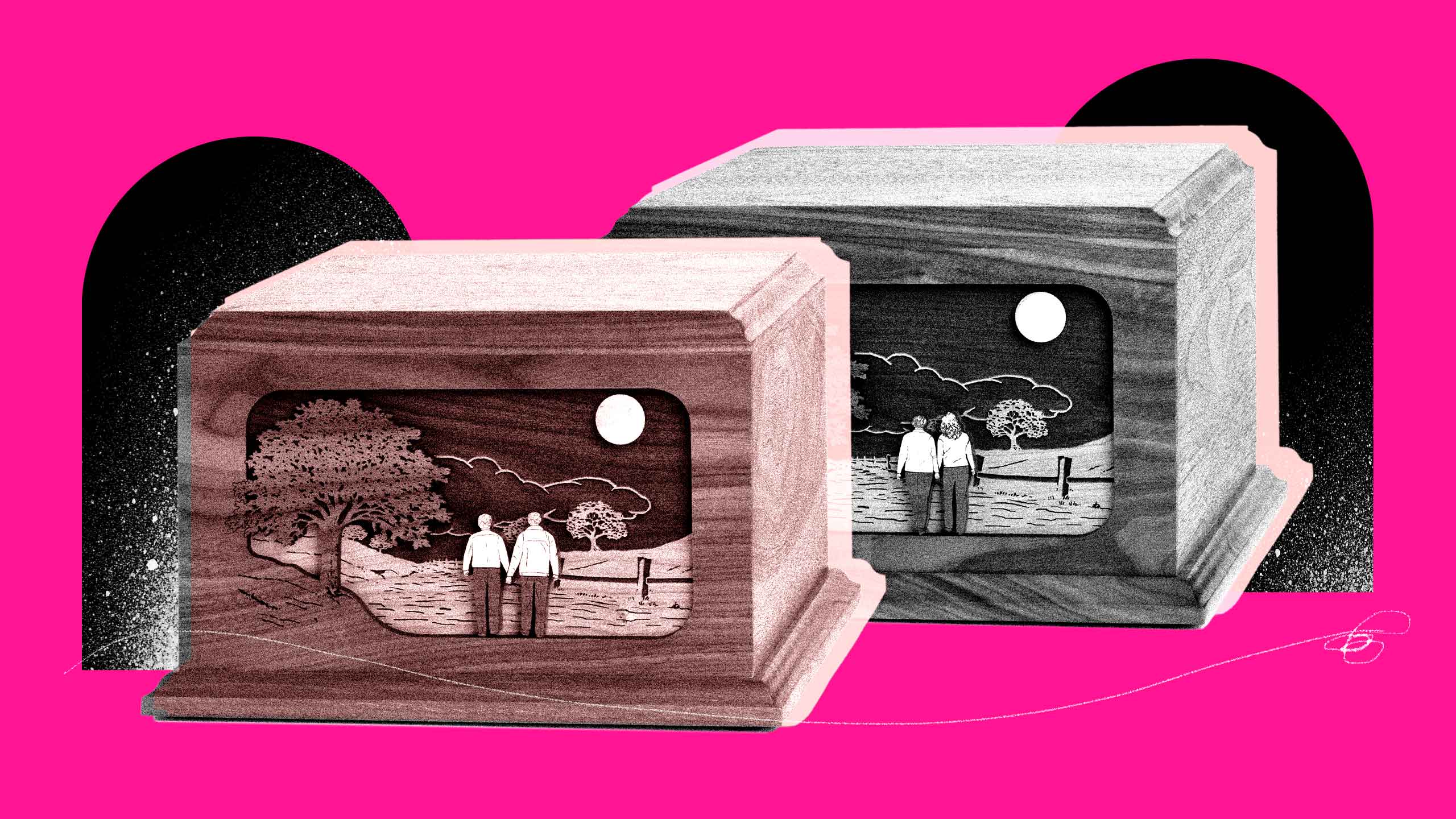

 Why you can trust Xtra
Why you can trust Xtra